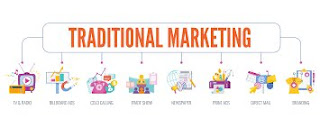Supercharge Your Growth Marketing Efforts with These Proven Techniques
In today’s digital landscape, content reigns supreme. It’s the currency of engagement, the fuel for brand awareness, and the lifeblood of successful growth marketing strategies. But simply cranking out content isn’t enough. To truly thrive, you need a strategic approach that leverages data analysis tools to inform your content planning and propel your growth.
This blog post delves into the
powerful synergy between content planning, growth marketing, and data
analysis tools. We’ll explore how to:
- Craft a Content Plan with Growth in Mind: Identify your target audience, define your goals, and
develop a content calendar that attracts, engages, and converts.
- Harness Data Analysis Tools for Content Insights: Uncover valuable data points to optimize your content
strategy and measure its success.
- Fuel Growth with Data-Driven Content: Refine your content based on audience preferences and
performance to achieve your growth objectives.
Building
a Growth-Focused Content Plan
Content planning sets the stage for your
content marketing journey. Here’s how to create a plan that fosters growth:
- Know Your Audience:
Growth hinges on understanding who you’re trying to reach. Conduct
audience research to identify their demographics, interests, pain points,
and preferred content formats (e.g., blog posts, videos, infographics).
- Define Your Goals:
What do you want to achieve with your content? Do you aim to increase
website traffic, generate leads, boost brand awareness, or drive sales?
Clearly defined goals provide direction and help you measure success
later.
- Content Brainstorming: Brainstorm content ideas that resonate with your
audience and address their needs. Consider different content pillars
(e.g., industry trends, how-to guides, product explanations) to cater to
various stages of the buyer’s journey.
- Content Calendar:
Develop a content calendar that schedules your content creation and
publication process. This ensures consistency and helps you track progress
toward your goals.
Pro Tip: Involve your sales and customer service teams when
brainstorming content. They have firsthand insights into customer needs and can
suggest topics that address common pain points.
Unleashing
the Power of Data Analysis Tools
Data analysis tools are your secret
weapons for optimizing your content strategy. Here are some key areas where
these tools come into play:
- Keyword Research:
Tools like SEMrush or Ahrefs help you identify relevant keywords with high
search volume and low competition. By incorporating these keywords into
your content, you increase your chances of ranking higher in search engine
results pages (SERPs) and attracting organic traffic.
- Content Performance Tracking: Tools like Google Analytics provide invaluable
insights into how your content performs. Analyze metrics such as page
views, bounce rate, dwell time, and social shares to understand what
resonates with your audience and what needs improvement.
- Competitive Analysis:
Tools like SimilarWeb or SpyFu can reveal your competitors’ content
strategies and top-performing content. Use this information to identify
content gaps and develop content that addresses topics your competitors
might be missing.
- Social Media Analytics: Platforms like Facebook Insights and Twitter Analytics
offer detailed data on how your content performs across social media
channels. This data helps you refine your social media strategy and tailor
your content for each platform.
Pro Tip: Don’t get overwhelmed by the sheer volume of data. Focus on
key metrics that align with your content goals.
Data-Driven
Content: The Growth Engine
By analyzing your data, you can
continuously refine your content strategy to fuel growth:
- Optimize Existing Content: Analyze your content’s performance and identify areas
for improvement. You can update outdated information, improve readability,
or adjust your call to action (CTA) based on insights from A/B testing.
- Identify Content Gaps: Use data to unearth topics your audience is interested
in but haven’t been addressed by your current content. This helps you fill
content gaps and ensure your strategy caters to diverse audience needs.
- Personalize Your Content: Use data from customer relationship management (CRM)
tools to personalize your content based on user demographics and past
interactions. This increases engagement and conversion rates.
- Experiment and Adapt:
Don’t be afraid to experiment with different content formats and distribution
channels. Analyze the results and adapt your strategy based on what
performs best.
Pro Tip: Stay up-to-date with the latest content marketing trends.
Analyze how these trends can be incorporated into your strategy to maintain
audience interest and drive growth.
Content planning, growth
marketing, and data analysis tools are a winning triad for
achieving sustained online success. By meticulously crafting a content plan
with growth in mind, leveraging data for informed content creation, and
constantly refining your strategy, you can unlock new levels of audience
engagement and propel your brand towards its growth objectives. Remember,
content is king



.jpg)
.jpg)

Comments
Post a Comment